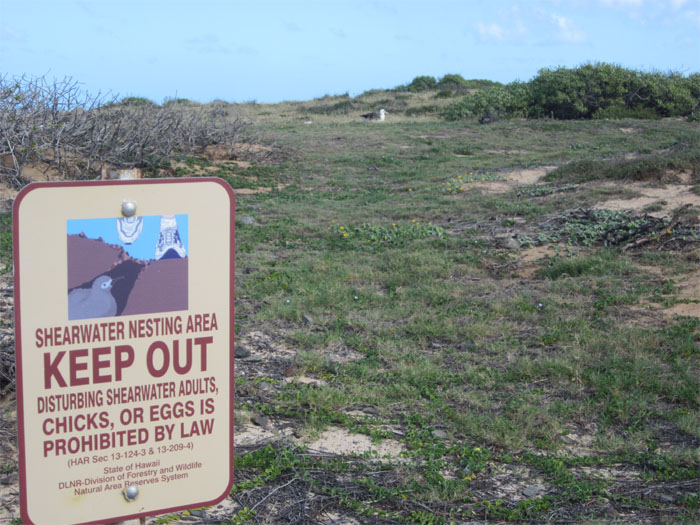
Kaena Point can be approached from the Waianae side or the Mokuleia side. We met up with the Hawaiian Trail and Mountain Club in the Kaena Point State Reserve Park parking lot at the end of Mokuleia.
Our large group of about 20 hikers started walking on this two mile stretch of uneven road, which is shared with fishermen driving their off road trucks and mountain bikers. We also saw a couple of planes and gliders fly overhead from nearby Dillingham Airfield. Kaena means “the heat” in Hawaiian, a very fitting name. There is no shade from the hot sun, none at all. Be prepared with sunscreen and hats.
We soon came to the entrance of the Kaena Point Nature Reserve. From this point, due to obvious reasons, off road trucks are not permitted, only hikers and mountain bikers can pass through. The club said they had obtained a special permit to access the reserve, but I saw a number of mountain bikers pass through this gate with no “special permits.”
Along the trail, we saw the Spirt Leap Rock or leina a ka ‘uhane, where in Hawaiian mythology, the recently passed would use this place as a jumping point into the afterlife.
The lighthouse marks the tip of Kaena Point. The original concrete lighthouse can be seen to the right where it fell over.
Looking back at the Waianae Mountain Range.
Mari pointing to a Hawaiian Monk Seal.
We saw this Hawaiian Monk Seal sunbathing in one of the coves. They are federally protected, so do not approach them to closely or bother them.
The reserve is ringed with tidepools teeming with all sorts of marine life. During winter time, the surf rivals and exceeds the monster waves at Waimea Bay. Due to it’s remoteness, few surfers come out here to ride them.
Checking out a sea cucumber, a fellow Chinese hiker was telling me that in China, this is considered an expensive delicacy. What are you waiting for?
Looking at another marine delicacy, sea urchin. The Japanese call it uni, which they slather on top of sushi. Hold the wasabi.
We left the waters to trek inland to see an albatross chick out of his nest which was right on the edge of the trail. They are building a pest fence that would contain most of the ocean facing areas from the mountain areas in an effort to prevent feral pigs, dogs and rodents from entering the preserve and eating the eggs and chicks.
Along with the Black footed albatross, the preserve is also home to the Wedge Tailed Shearwater birds and other seabirds as well as endangered plants, some only found at Kaena Point.
Eventually we made our way back on the trail, hiking a total of around five miles. It was a nice exploratory hike on the West side.

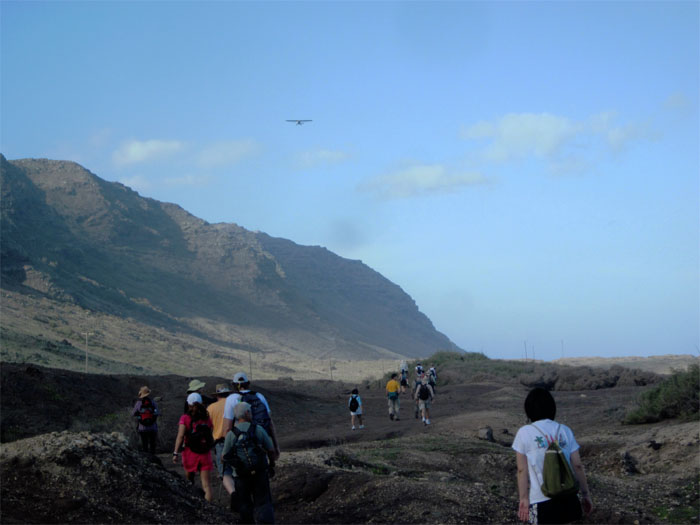
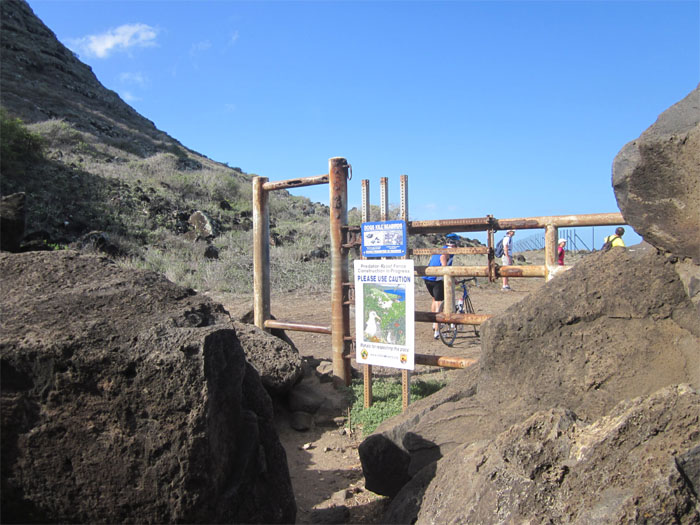
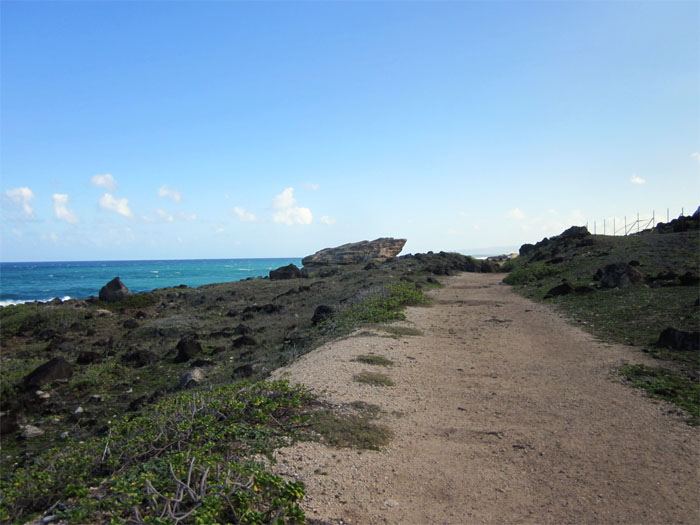


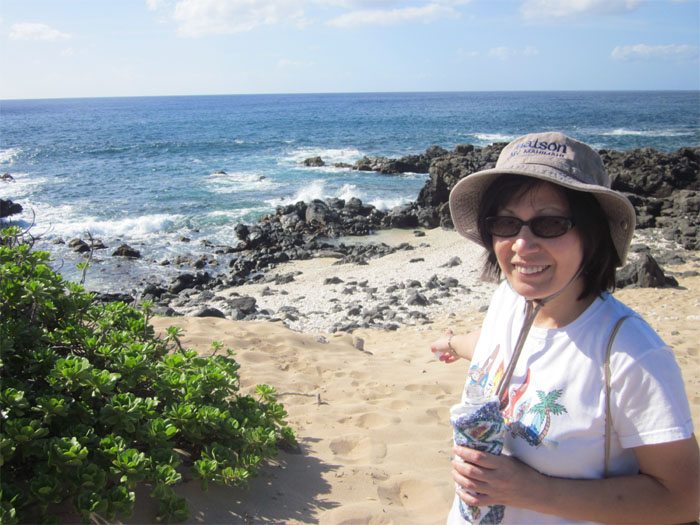
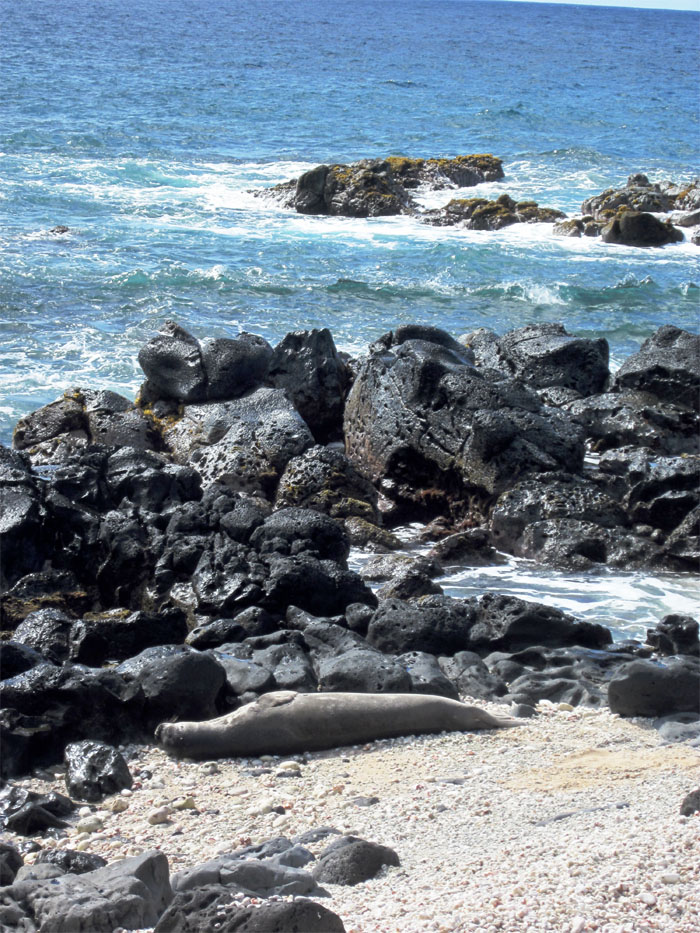
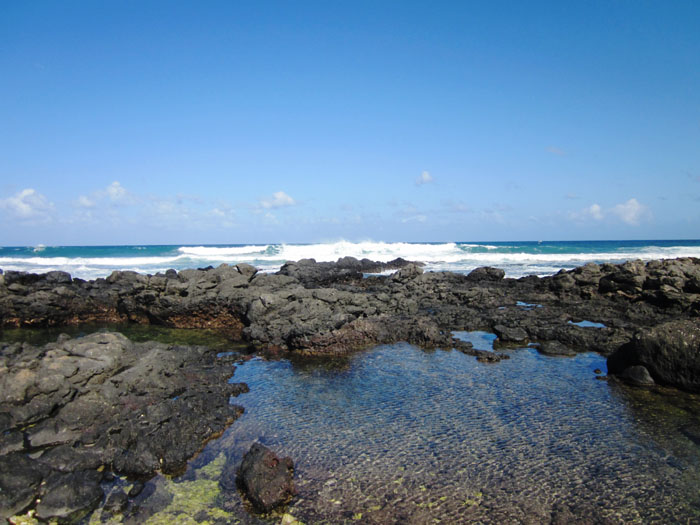
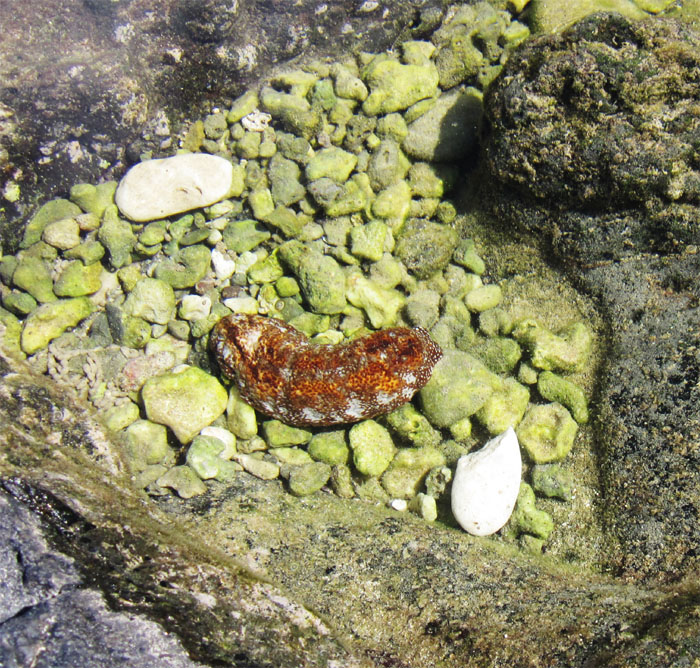

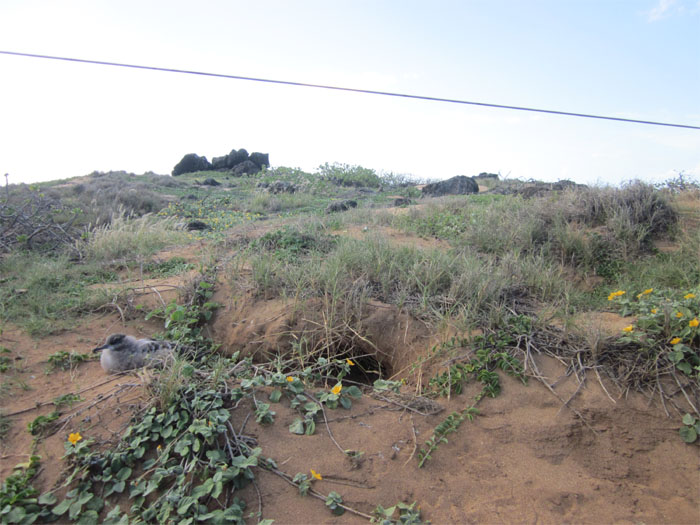
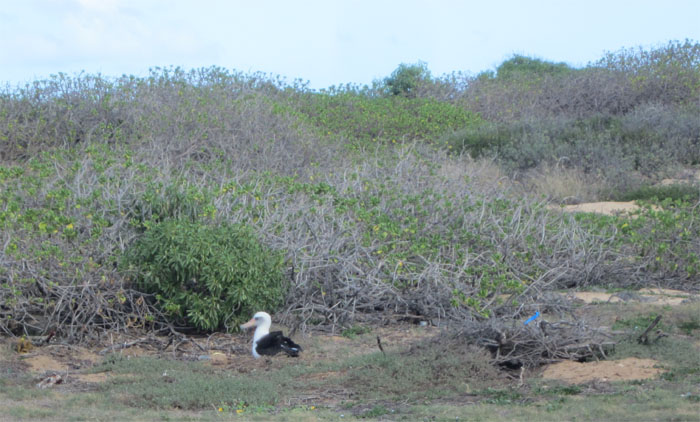
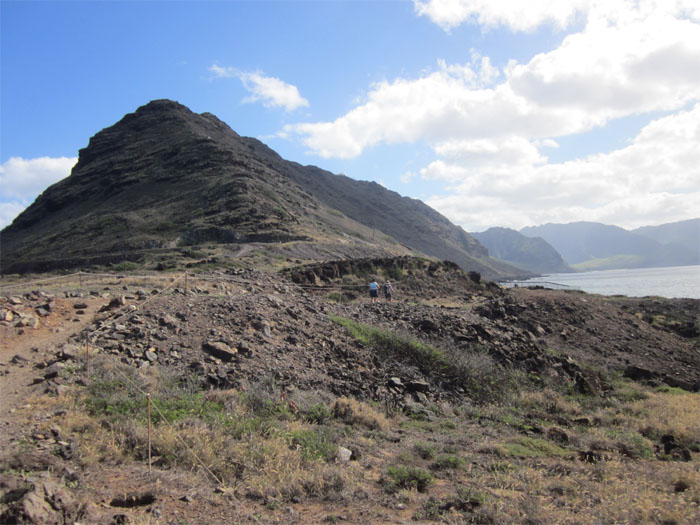
{ 0 comments… add one now }